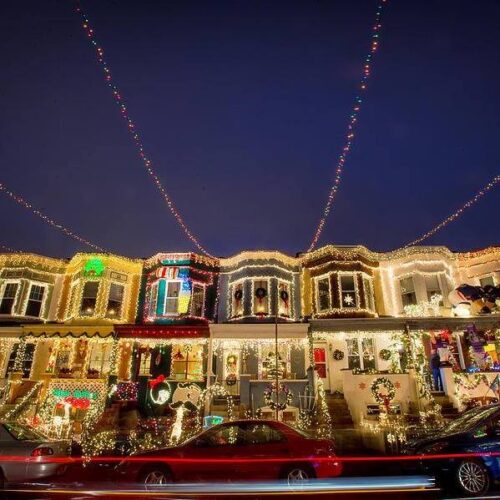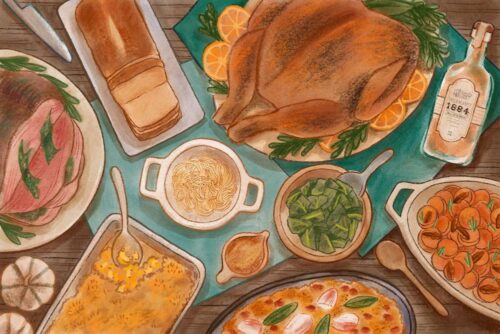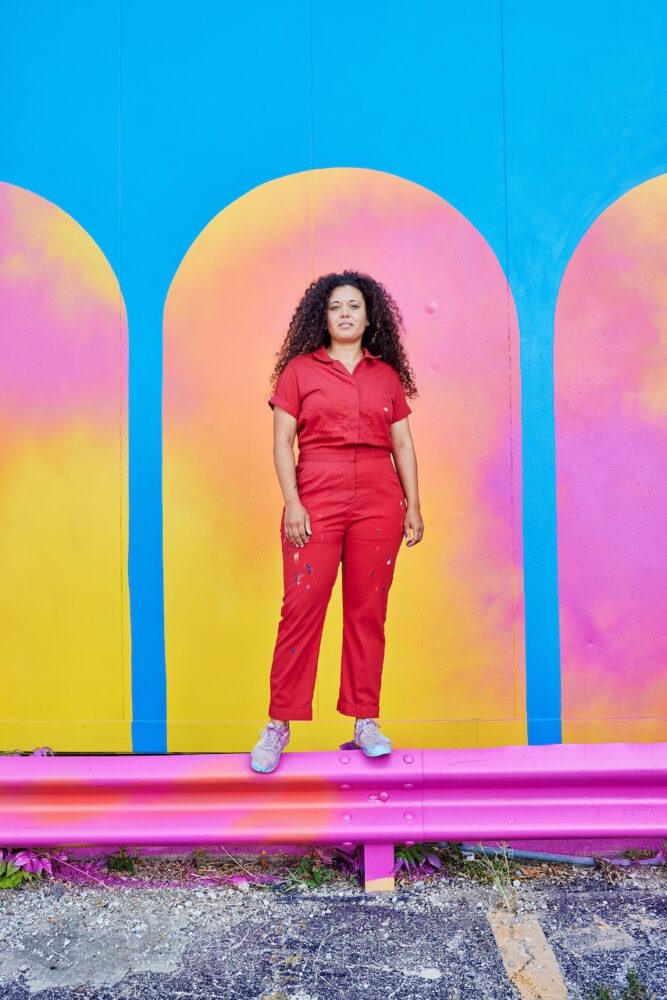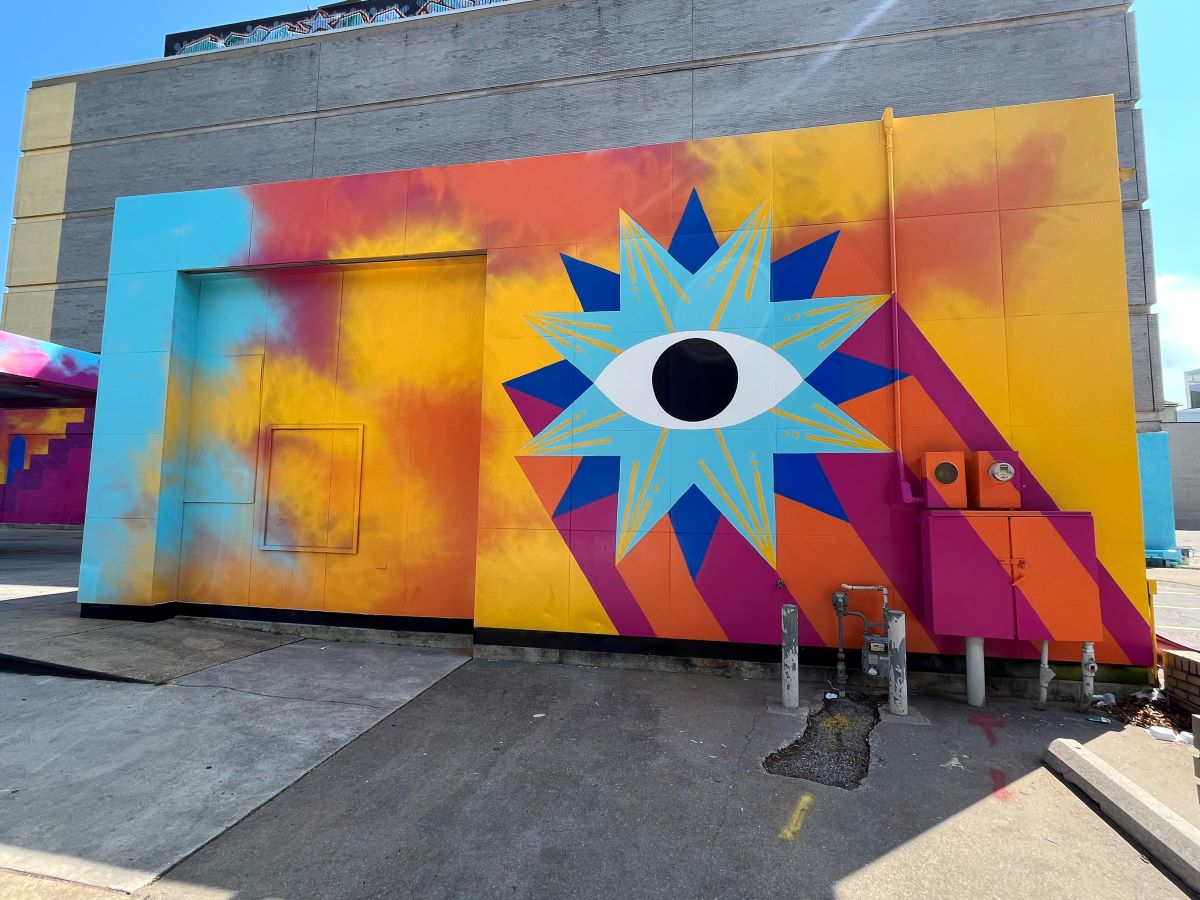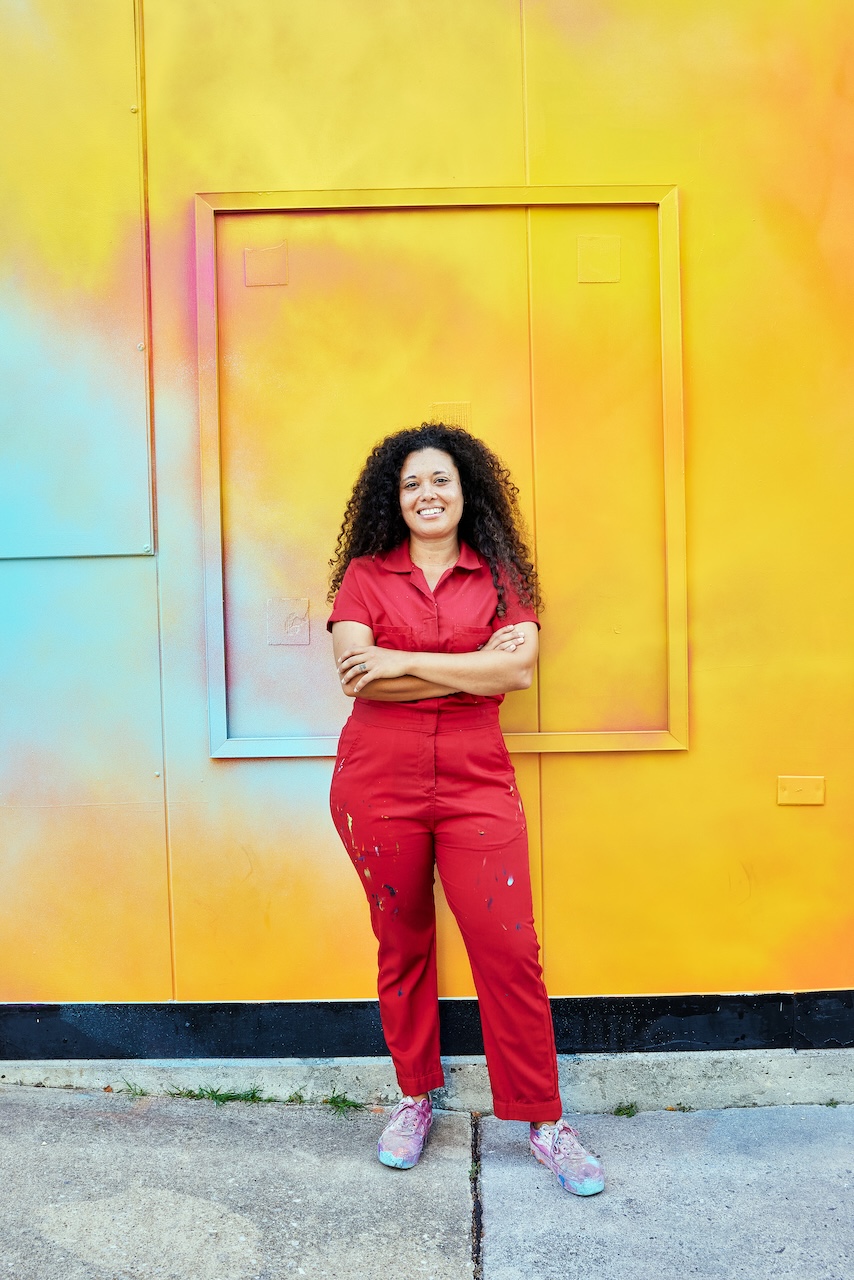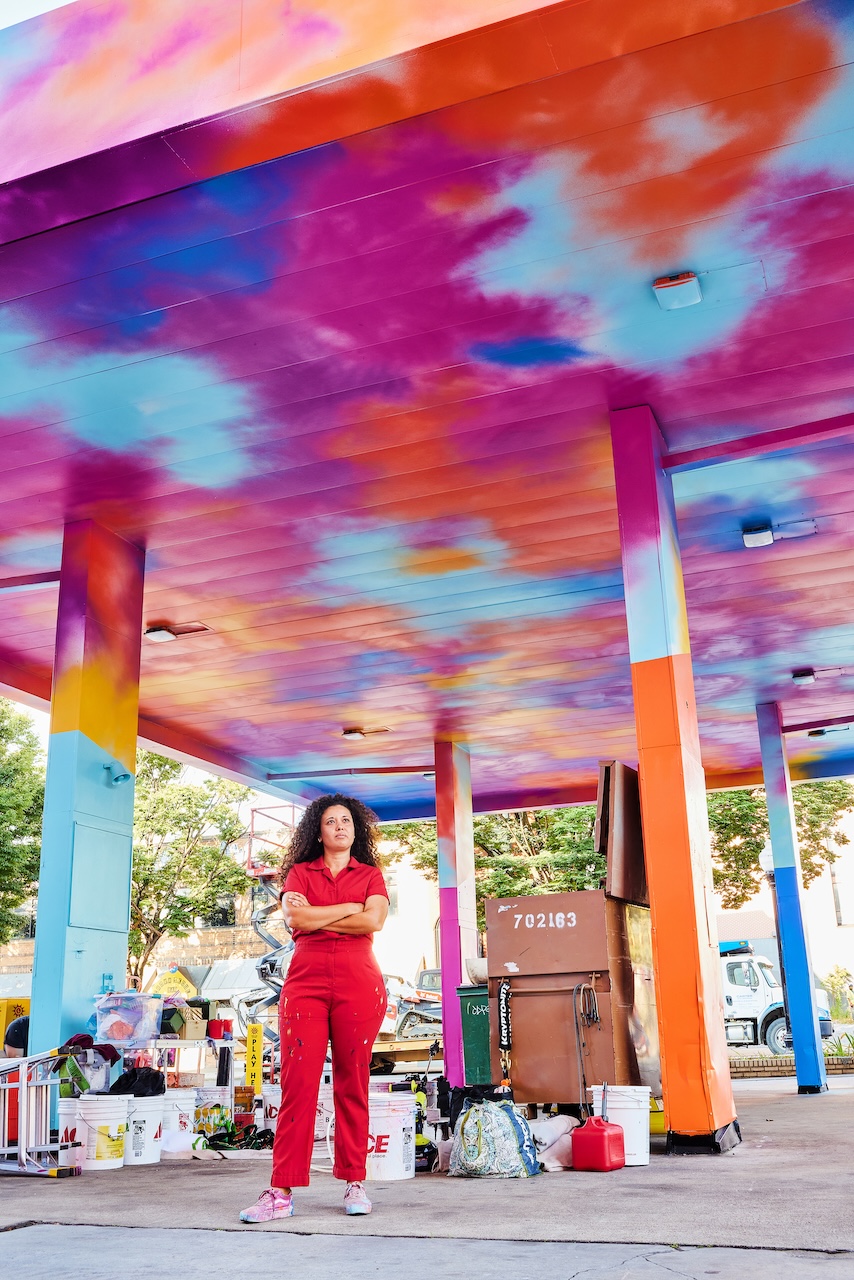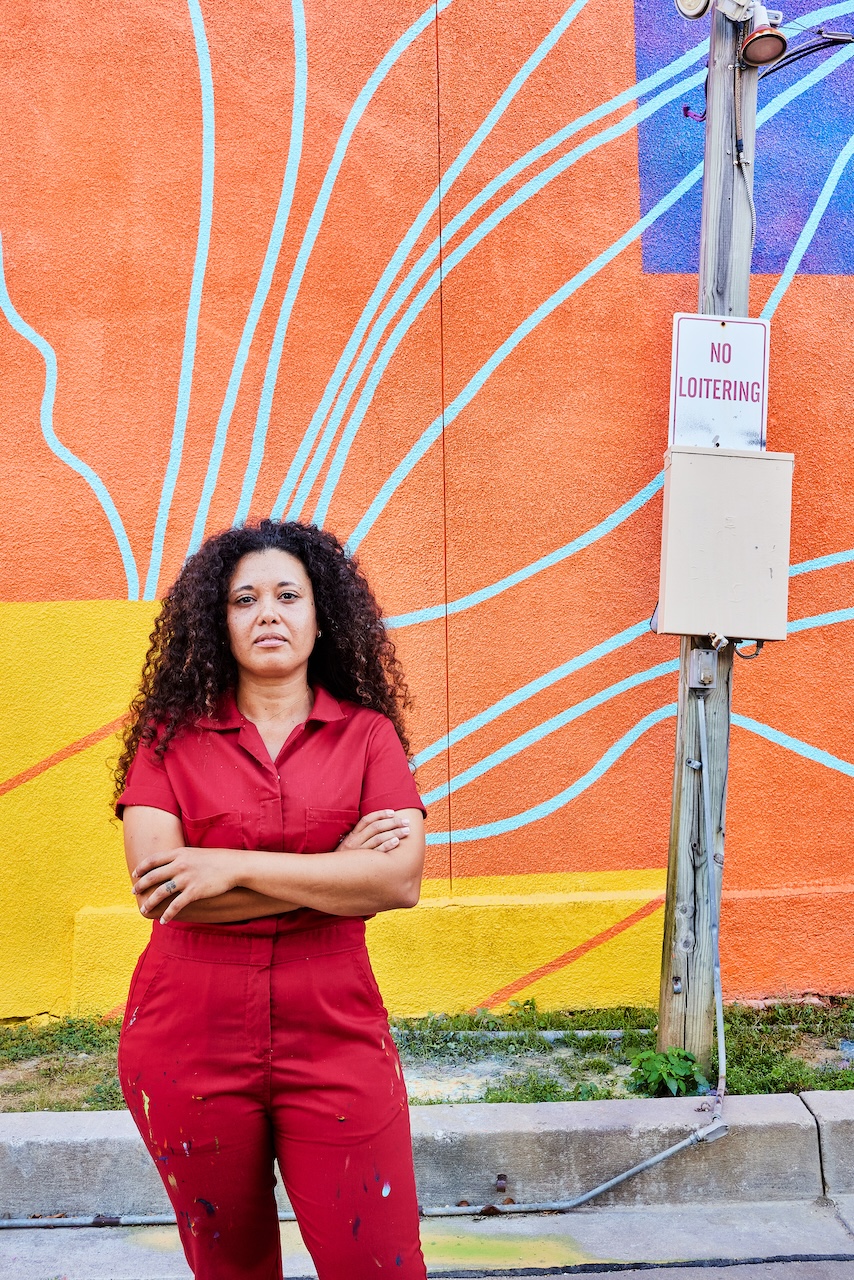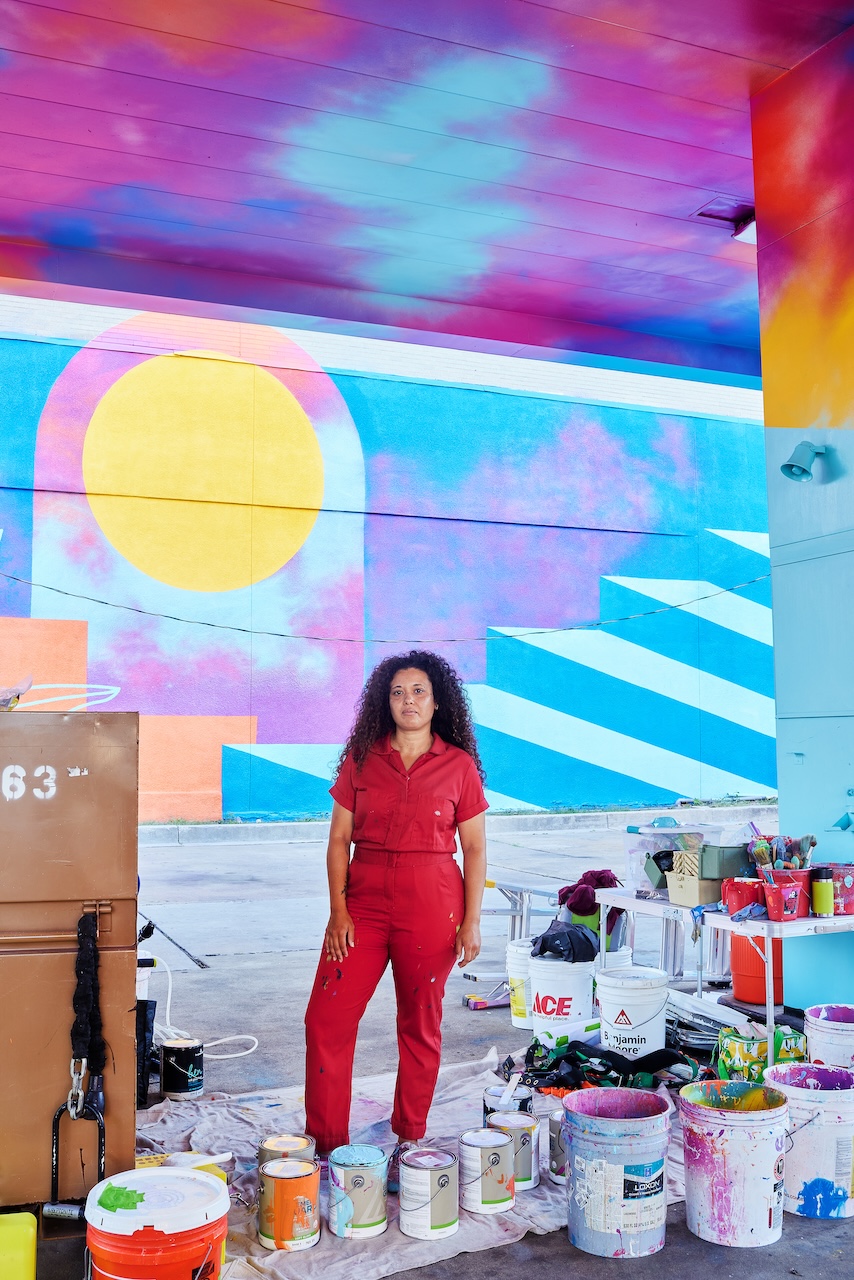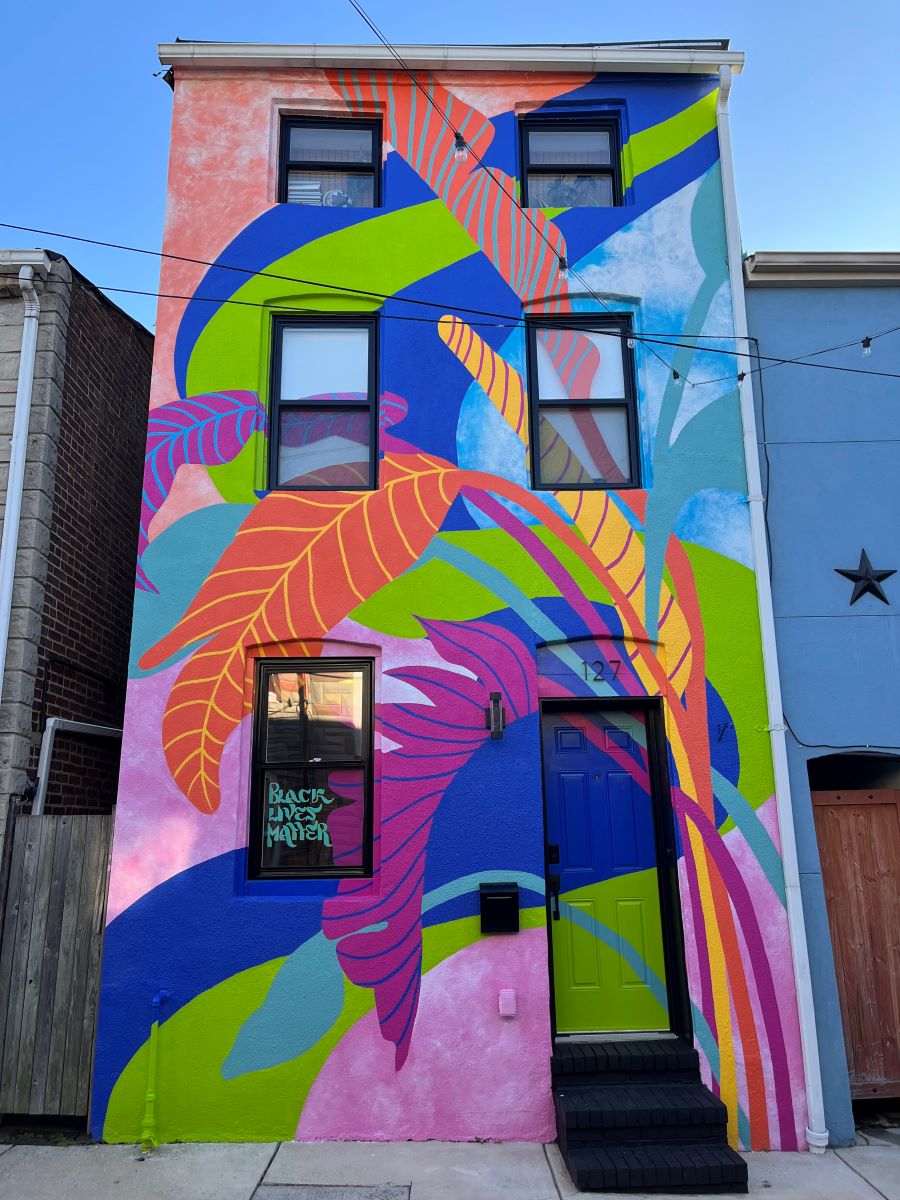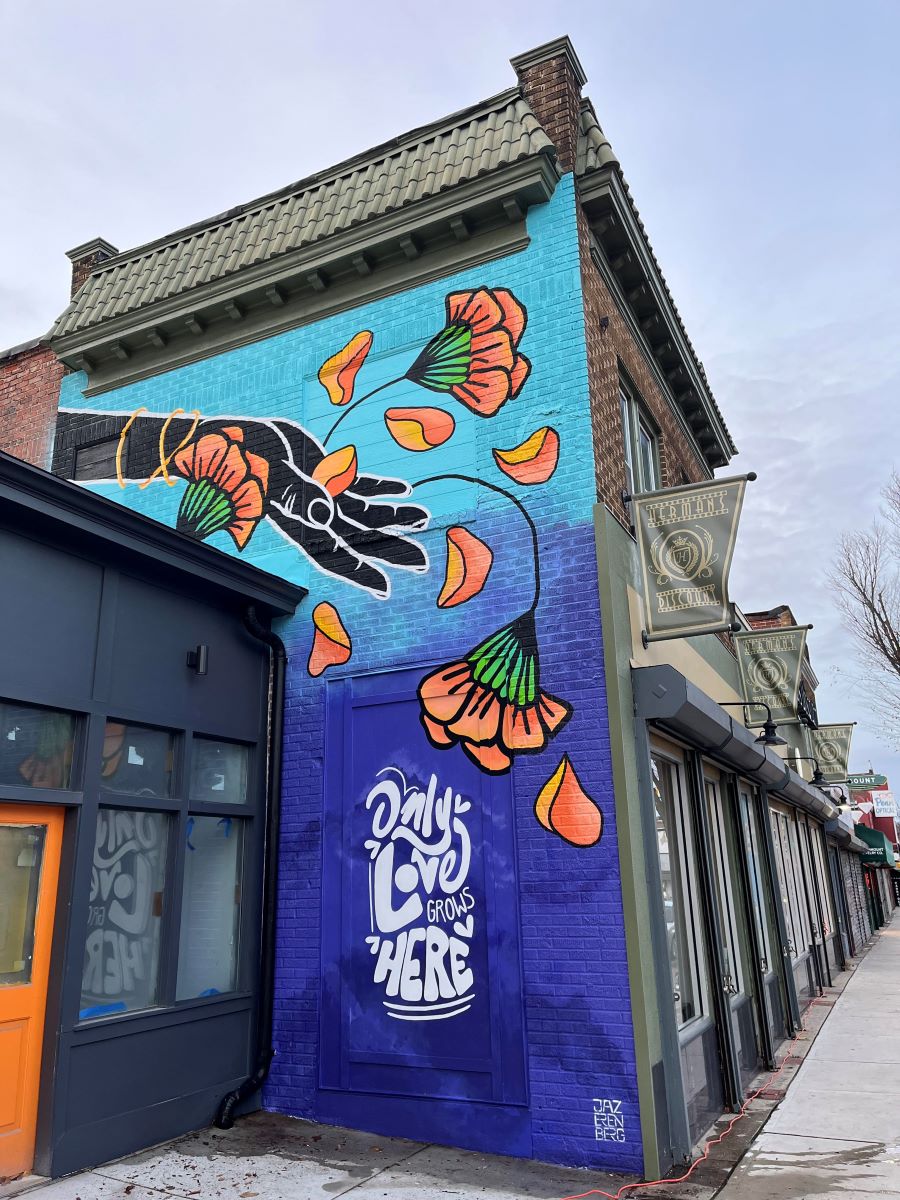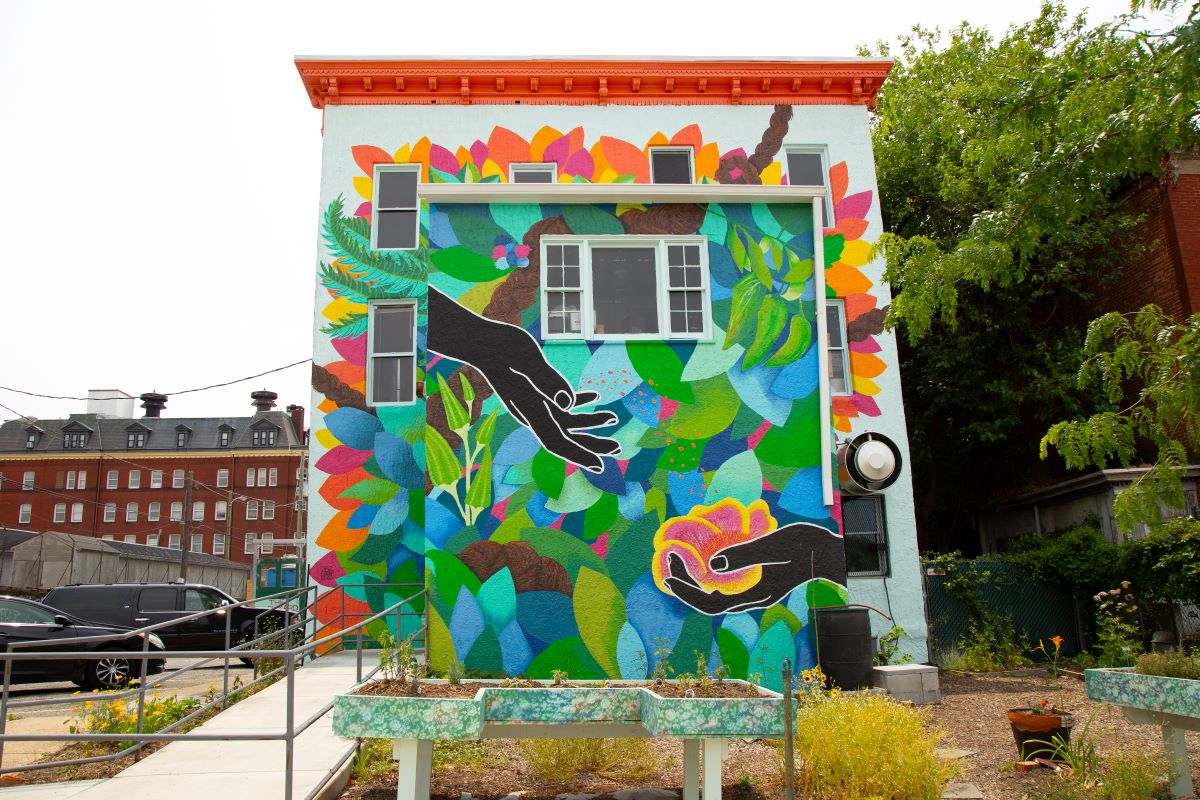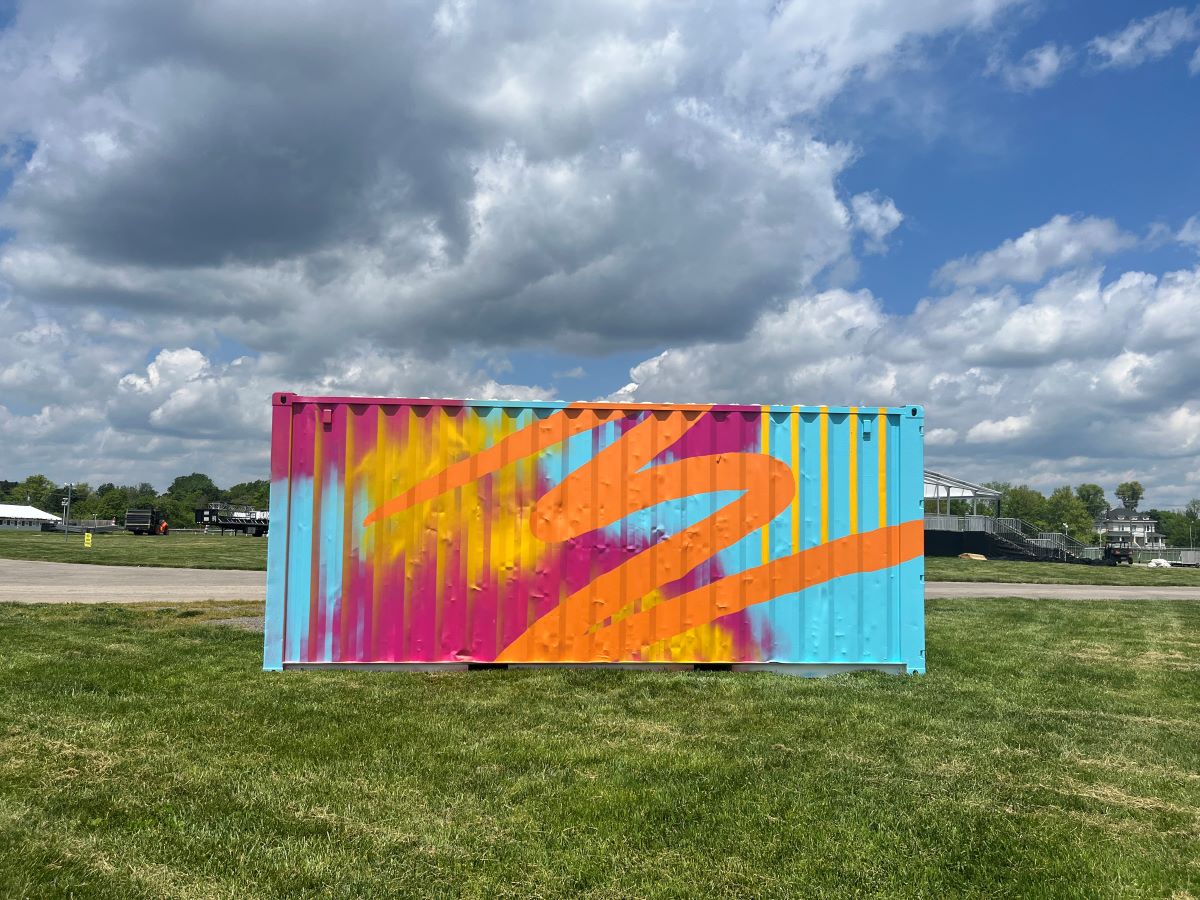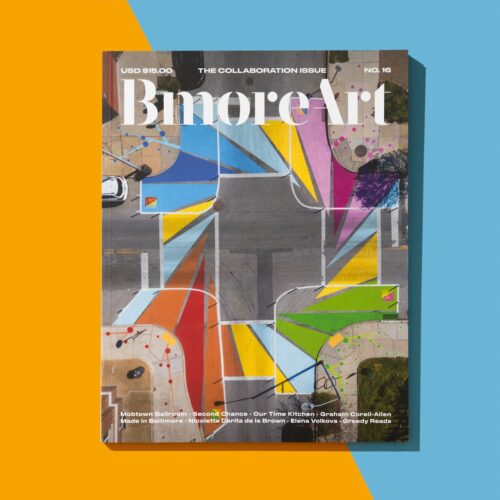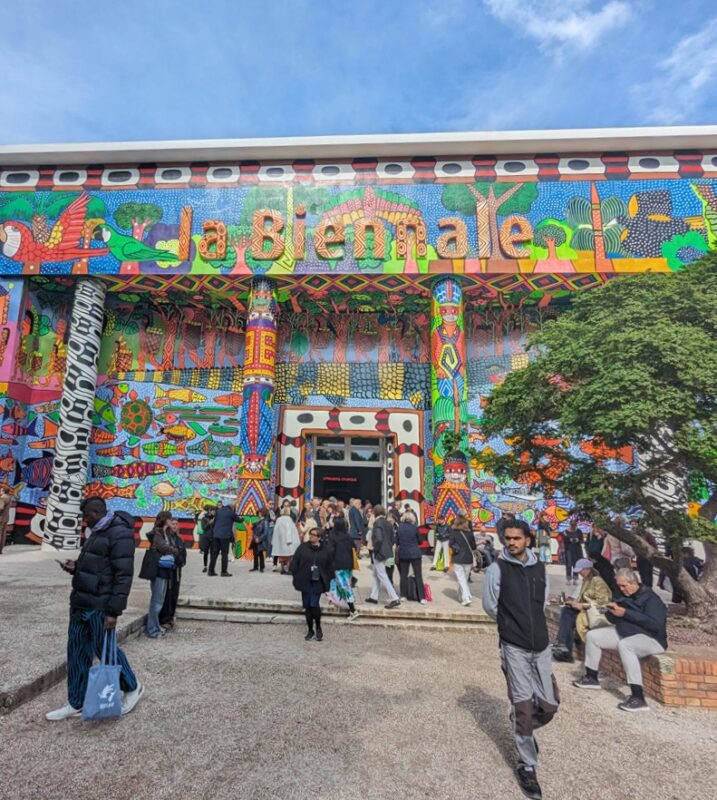If you’re lucky, you’ll spot one or two while strolling through Baltimore’s brick-lined streets. A flash of color, a burst of movement. The bright tapestries stand out from afar, rainbows wrapped around unassuming buildings. Perhaps you’ve already seen them, peered up at a fortuitous moment and found your eyes frozen, wandering up and down, left and right, circling the intricate marks and luscious hues.
Standing in front of Jaz Erenberg’s vibrant murals feels like inhaling pure color. It’s exhilarating, akin to finding money on the ground or watching sun dance through rain-drenched leaves. Erenberg’s paintings are impressive in skill and scale. They’re entities that both animate their urban surroundings and seem to breathe themselves. Bold additions to Baltimore’s neighborhoods, these candy-colored artworks, and their creator, harbor a surprising history.
Erenberg’s connection to mural painting is nuanced, a relationship that emerged gradually along a zigzagging trajectory. After beginning her undergraduate studies at a university in Israel, Erenberg (motivated by her recent marriage and desire to be near her stepson) transferred to MICA to complete her BFA. Initially a sculpture major, the artist realized during her third year that she didn’t want to “make art for a White Box audience.”
While Erenberg acknowledges there’s nothing inherently wrong with this niche, she discovered early in her career that direct interactions with people—particularly local communities—nourished her more than creating in an isolated studio. A course on the history of Baltimore monuments later sparked Erenberg’s curiosity about public art. It was a discipline that she recalls, “I didn’t necessarily understand,” but one that was enticing because of its hands-on, social nature.
